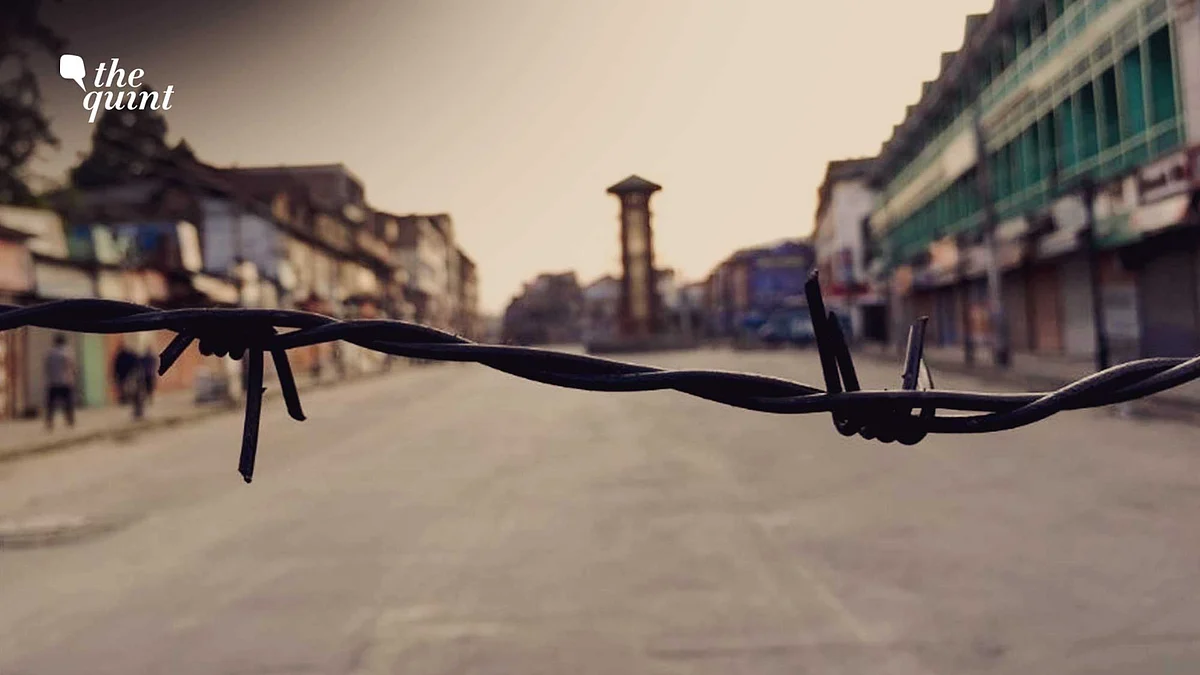Politics
Kashmir’s Troubling Transformation: Six Years After Statehood Loss

The situation in Jammu and Kashmir has deteriorated significantly since the revocation of its special status on August 5, 2019. Six years after the controversial constitutional changes, the region grapples with intensified militancy, territorial losses, and political instability, creating an environment that many now view as more precarious than before.
Operation Sindoor, launched on May 7, 2023, aimed to curtail militant activities in the region. Yet, the government has indicated that the operation “is not over,” suggesting that hostilities could resume at any moment. This uncertainty is compounded by a lack of effective intelligence, which has heightened concerns regarding India’s security posture in the region. The international landscape has also shifted, with growing criticism of India’s stance on terrorism and Jammu and Kashmir from various global players.
The Promise of Constitutional Changes
Initially, the Indian government asserted that the changes made in 2019 would resolve the longstanding disputes surrounding Jammu and Kashmir. Instead, these alterations have drawn international attention, leading to discussions at the United Nations Security Council, where nations like China and Turkey stood firmly with Pakistan while Western nations remained skeptical.
The division of Jammu and Kashmir, which resulted in its status changing to Union Territories, has been viewed as a significant misstep. The previous Constitution of Jammu and Kashmir explicitly declared that the state was an integral part of India and prohibited any alterations to its borders. By dismantling this framework, the government has sparked questions regarding the region’s legal and political future.
Political Fallout and Centralized Control
The centralization of control over Jammu and Kashmir has been met with criticism. Before 2019, the state government acted as a buffer during crises, allowing for a degree of local governance. However, since the changes, the Bharatiya Janata Party (BJP) has struggled to restore statehood, exploring numerous formulas without success.
The fate of local politicians has added to the region’s challenges. A notable incident occurred on June 24, 2021, when several political leaders, previously detained, were brought to Delhi for a symbolic meeting with the Prime Minister. This move was perceived as an attempt by the ruling party to manipulate the political landscape, culminating in a gerrymandering effort aimed at securing a Hindu chief minister for the Union Territory Assembly.
Despite these attempts, the National Conference, a historic political party in the region, managed to secure a majority in the subsequent elections, demonstrating that local sentiment still favors established political entities over new political narratives pushed by the BJP.
The government’s push against dynastic politics has also been called into question. The reliance on figures like Sajad Lone, whose leadership is largely attributed to familial connections, highlights the ongoing complexities of political dynamics in Jammu and Kashmir.
The removal of Article 370, while a focal point of the 2019 changes, has proven to be less impactful than many anticipated. This article had already been diluted over the years, granting the Central government more powers over Jammu and Kashmir than over other states. The modifications to Article 35A, which had implications for residency and property rights, have been largely offset by the introduction of new domicile laws, further complicating the region’s legal landscape.
The ongoing turmoil in Jammu and Kashmir underscores a broader narrative of failed promises and mounting challenges. The central government now faces criticism for its handling of the situation, as it seeks ways to restore order and manage the political landscape it has reshaped. The irony remains that a government that sought to redefine Jammu and Kashmir’s status now finds itself in a position of seeking to reinstate the old political order that it dismantled.
As the region continues to experience heightened tensions and uncertainty, the need for constructive dialogue and effective governance becomes ever more pressing. The future of Jammu and Kashmir hangs in the balance, with the potential for further conflict looming if the underlying issues are not addressed comprehensively.
-

 World5 months ago
World5 months agoSBI Announces QIP Floor Price at ₹811.05 Per Share
-

 Lifestyle5 months ago
Lifestyle5 months agoCept Unveils ₹3.1 Crore Urban Mobility Plan for Sustainable Growth
-

 Science4 months ago
Science4 months agoNew Blood Group Discovered in South Indian Woman at Rotary Centre
-

 World5 months ago
World5 months agoTorrential Rains Cause Flash Flooding in New York and New Jersey
-

 Top Stories5 months ago
Top Stories5 months agoKonkani Cultural Organisation to Host Pearl Jubilee in Abu Dhabi
-

 Sports4 months ago
Sports4 months agoBroad Advocates for Bowling Change Ahead of Final Test Against India
-

 Science5 months ago
Science5 months agoNothing Headphone 1 Review: A Bold Contender in Audio Design
-

 Top Stories5 months ago
Top Stories5 months agoAir India Crash Investigation Highlights Boeing Fuel Switch Concerns
-

 Business5 months ago
Business5 months agoIndian Stock Market Rebounds: Sensex and Nifty Rise After Four-Day Decline
-

 Sports4 months ago
Sports4 months agoCristian Totti Retires at 19: Pressure of Fame Takes Toll
-

 Politics5 months ago
Politics5 months agoAbandoned Doberman Finds New Home After Journey to Prague
-

 Top Stories5 months ago
Top Stories5 months agoPatna Bank Manager Abhishek Varun Found Dead in Well









